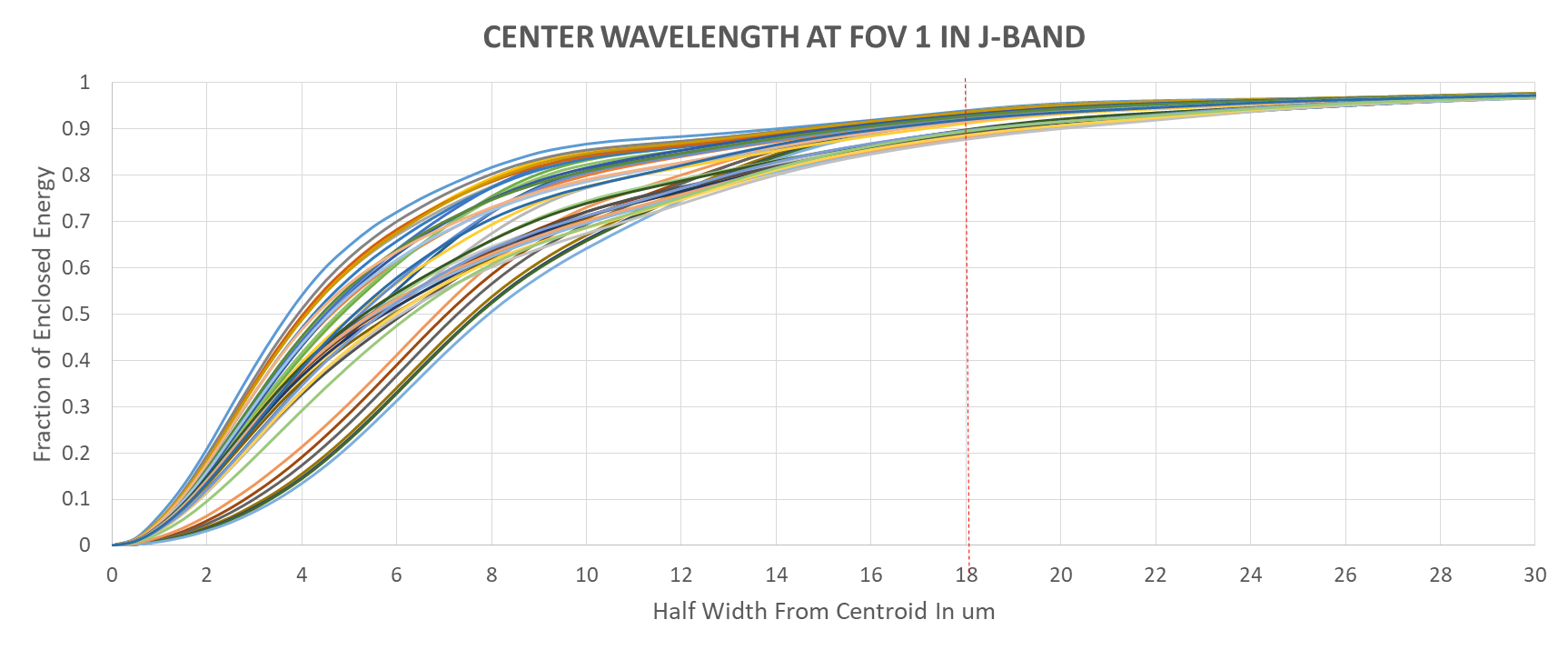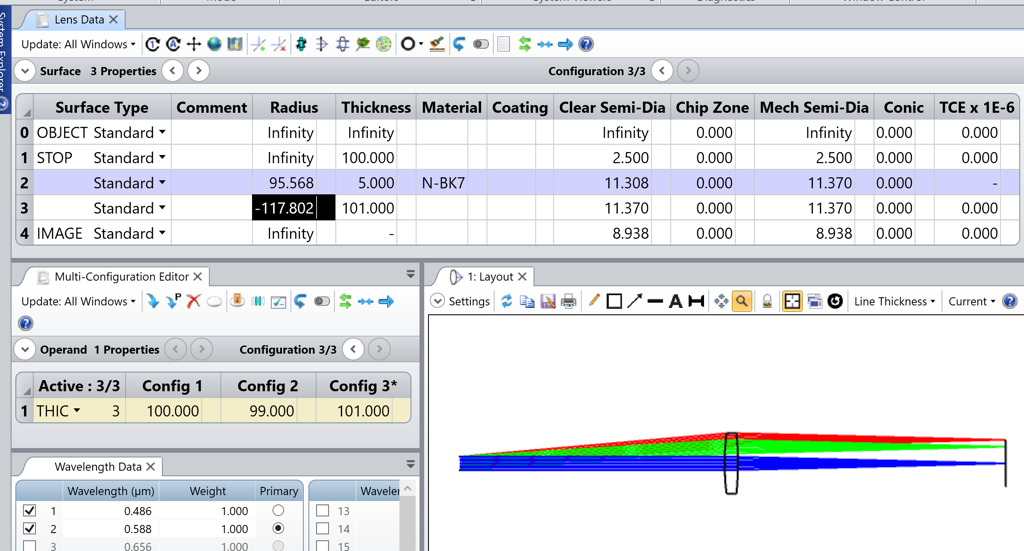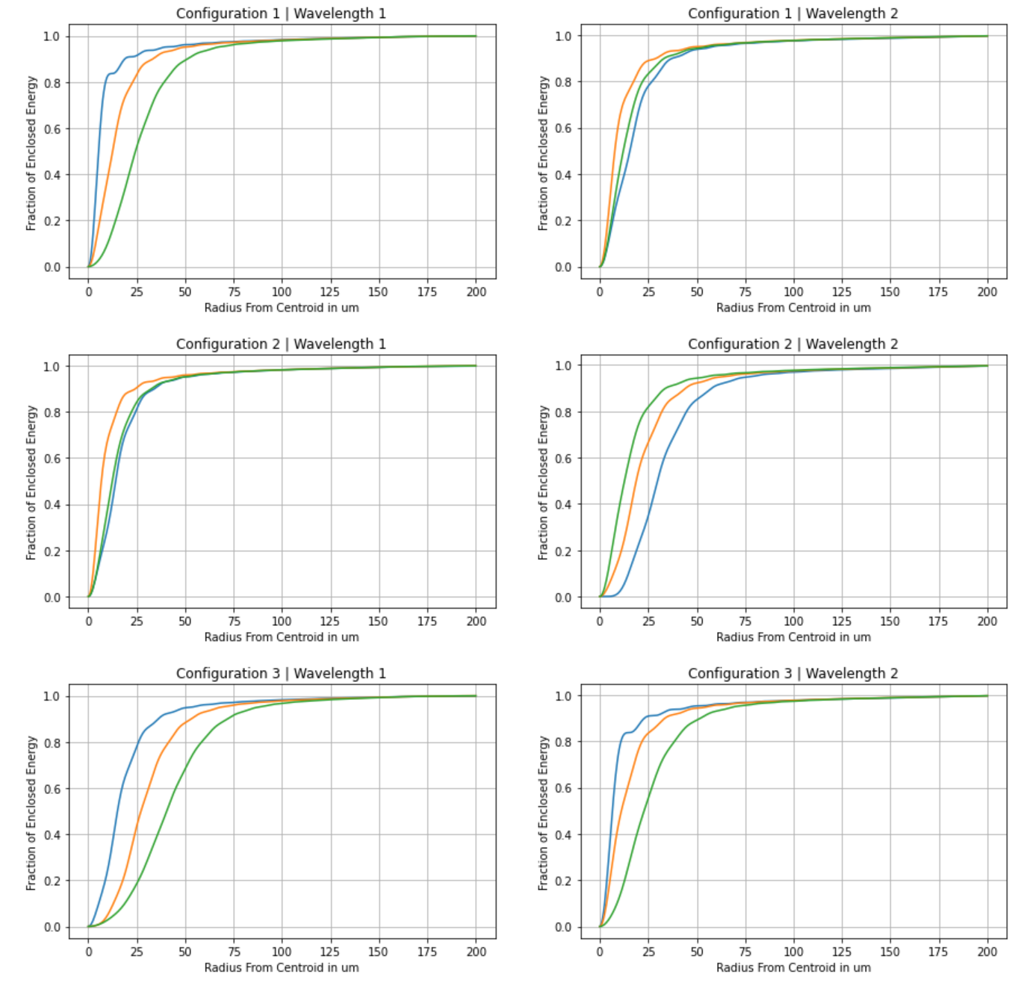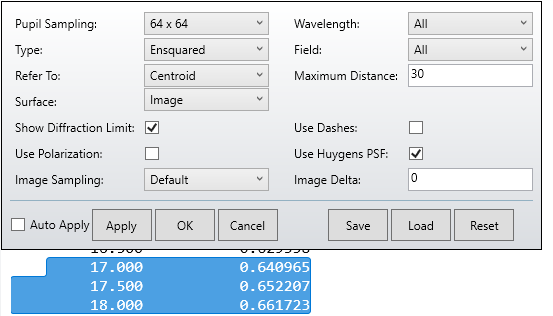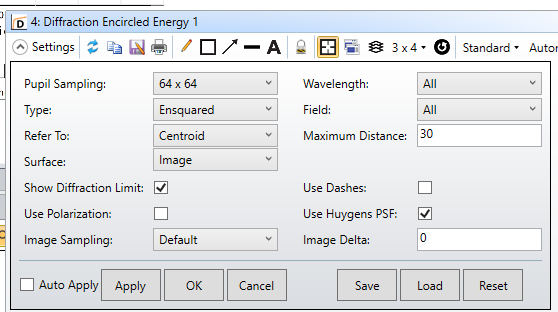Dear Zemax team,
I am calculating the Diffraction Encircle Energy (DEE) in my multi-configuration file, which has 42 configurations. I want to extract the data of DEE for each configuration, and plot all of them in the same chart. What I did for now are copy, paste, and then plot all the data within an Excel spreadsheet. It cost a lot of time. Below is one figure I did for one wavelength, and I have more wavelengths and more FOVs.
I am wondering if anyone could give me any suggestions to make this calculation automaticlly. Thanks ahead!
